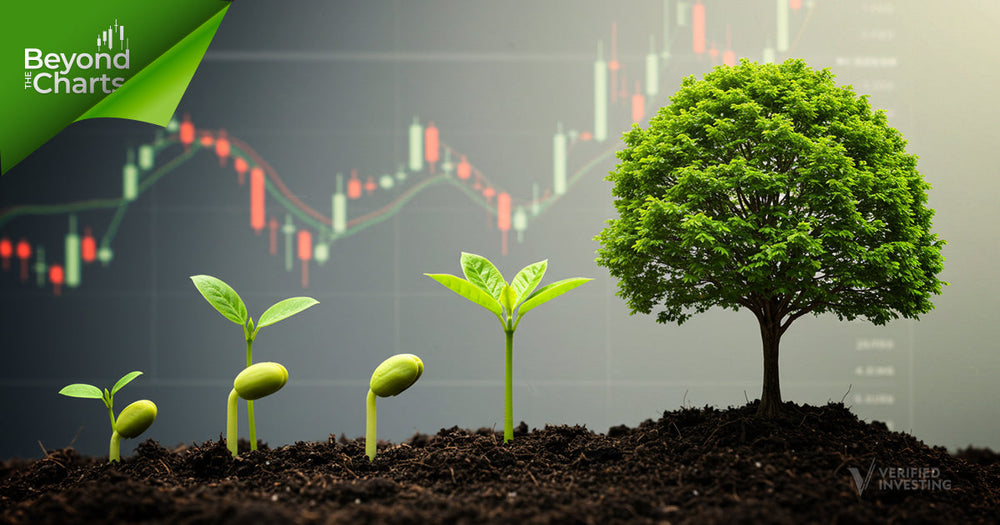Beyond the Charts: The Highs and Lows of Small-Cap Investing

Small-cap investing is a rollercoaster. It's the thrill of spotting the next big thing—the tech startup that might become the next Apple, the pharmaceutical company with a potential breakthrough drug, or the small manufacturer that suddenly becomes indispensable. But for every small-cap success story, there's a cautionary tale of high hopes dashed by market volatility, poor management, or bad luck.
In this article, we're diving into the risks and rewards of small-cap investing. We'll explore some of the most notorious small-cap triumphs and disasters, unpack why these stocks are both alluring and perilous, and look at ways to balance the excitement with a more measured approach.
What Are Small-Cap Stocks?
Small-cap stocks refer to companies with a market capitalization between $300 million and $2 billion. These companies often represent emerging sectors, innovative startups, or businesses poised for growth. However, their smaller size and limited resources make them more vulnerable to market fluctuations and operational challenges.
As Warren Buffett once said, "Risk comes from not knowing what you're doing." With small-caps, the stakes are higher precisely because the future is less certain.
The definition of small-caps has evolved over time. Decades ago, a company with a $300 million market cap might have been considered mid-sized. As more money has poured into the stock market and valuations have soared, the thresholds for small, mid, and large caps have shifted. This change reflects not just inflation but the sheer scale of modern markets, where companies grow bigger, faster, than ever before.
Small-cap companies are often at the forefront of innovation. They are the scrappy underdogs introducing disruptive technologies, niche products, or groundbreaking services. While their agility and potential for rapid growth can yield significant rewards, their lack of established infrastructure and financial stability amplifies the inherent risks.
Why Small-Cap Investing Is So Tempting
The Potential for High Returns
Small-cap stocks have historically outperformed large-cap stocks during periods of economic recovery and growth. According to a 2021 study by Bank of America, small-caps delivered an average annual return of 12.1% from 1926 to 2020, compared to 10.3% for large-caps.
The "Underdog" Appeal
There's something inherently exciting about rooting for the underdog. Small-caps often operate in niche markets, making them attractive to investors who want to bet on innovation and disruption.
The "What If" Factor
Every small-cap investor dreams of finding the next Amazon. The idea of turning a modest investment into life-changing wealth is a powerful motivator. However, it's crucial to remember that such stories are exceptions, not the rule.
The allure of small-caps lies not only in their potential for high returns but also in the emotional satisfaction of being an early believer in a company's vision. This speculative edge often appeals to investors looking for more than just financial gain—it's about being part of something groundbreaking.
When Small-Caps Go Right
Monster Beverage Corporation
Monster Beverage started as a small energy drink company. In the early 2000s, its stock traded for under $1 per share. By 2022, it was worth over $90 per share, delivering a 9,000% return to early investors. Monster's success came from tapping into a growing market and building a recognizable brand.
Netflix
Netflix began as a small DVD rental service. In 2002, its IPO price was $15 per share. Investors who stuck with Netflix through its transformation into a streaming giant saw their shares grow to over $700 by 2021, a 46x return.
Beyond Meat
Beyond Meat's IPO in 2019 was priced at $25 per share. Within two months, the stock soared to $234, driven by hype and growing consumer interest in plant-based diets. While it's since cooled off, early investors who timed their exit well saw extraordinary returns.
Tesla (Before the Hype)
Tesla's early days as a public company were fraught with skepticism. In 2010, its IPO was priced at $17 per share. Fast-forward to 2023, and Tesla has become a juggernaut in the electric vehicle market, delivering life-changing returns to early investors.
Shopify
Shopify started as a small-cap stock catering to entrepreneurs and small businesses. After its IPO in 2015 at $17 per share, Shopify's stock soared as e-commerce became indispensable. By 2021, shares exceeded $1,500, making it one of the greatest growth stories of the decade.
Apple (The Early Days)
Though now a behemoth, Apple once teetered on the edge of irrelevance. In the 1990s, its stock traded as a struggling small-cap. Investors who believed in Steve Jobs' return and Apple's potential saw the company rise to become the most valuable in the world.
When Small-Caps Go Wrong
Pets.com
Pets.com became infamous for its meteoric rise and fall during the dot-com bubble. Backed by heavy marketing and a memorable sock puppet mascot, the company went public in 2000 at $11 per share. Within nine months, it had collapsed, leaving investors with nothing.
Luckin Coffee
China-based Luckin Coffee was poised to rival Starbucks. Its stock soared after its IPO in 2019, but by 2020, an accounting scandal revealed fabricated sales figures. The company was delisted, and investors faced massive losses.
Theranos
Though not publicly traded, Theranos serves as a cautionary tale of hype over substance. Promising revolutionary blood-testing technology, it attracted billions in investment before collapsing under fraud allegations.
GigaMedia
A darling of the early 2000s, GigaMedia promised to dominate the online gaming space. At its peak, it traded over $40 per share, only to plummet to under $1 as competitors outpaced it and strategic missteps became apparent.
Quibi
Though Quibi wasn't a small-cap stock, its failure offers a parallel lesson. With $1.75 billion in funding, the short-form video platform launched in 2020 with high hopes. Six months later, it shut down, a victim of poor execution and overestimated demand.
The 1929 Small-Cap Crash
Many small-cap companies of the 1920s rode the wave of optimism that defined the Roaring Twenties. However, when the market crashed in 1929, these smaller companies lacked the resources to weather the storm. Investors who had bet heavily on speculative stocks were among the hardest hit, highlighting the importance of caution.
The Risks of Small-Cap Investing
Volatility
Small-cap stocks are more susceptible to dramatic price swings due to lower trading volumes and market sentiment shifts.
Limited Resources
Smaller companies often lack the financial and operational resilience to weather economic downturns or competitive pressures.
Lack of Transparency
Small-caps may not have the same reporting standards as larger companies, making it harder to assess their true financial health.
The risks associated with small-caps mean that thorough research, patience, and risk tolerance are non-negotiable. As the saying goes, "Don't invest what you aren't willing to lose," and small-cap investing embodies this advice.
A Safer Way to Seek Excitement
If the allure of high-risk, high-reward investing appeals to you, there are ways to capture that excitement with less risk:
- Focus on High-Growth Sectors: Instead of small-caps, consider large-cap companies in dynamic sectors like technology, healthcare, or renewable energy. These offer innovation with more stability.
-
Trade High-Interest Stocks with Verified Investing:
- Use the Advanced Trader Insights to identify large-cap stocks showing strong momentum.
- Explore the Apex Live Day Trading Room to trade alongside seasoned professionals who can guide you toward opportunities with controlled risk.
- Diversify with ETFs: ETFs focused on small-cap stocks provide exposure to the sector while spreading the risk across multiple companies. Verified Investing's resources can help you select the right ones.
- Leverage Educational Tools: Verified Investing's free resources, including in-depth webinars and expert analysis, can help you explore exciting investment opportunities without venturing into unnecessary risk.
- Monitor Historical Trends: Analyzing past small-cap patterns can help identify characteristics of winners and losers, providing valuable insights for future investments.
Final Thoughts
Small-cap investing is not for the faint of heart. It's a world of high stakes, where the potential for outsized gains is matched only by the risk of significant losses. But for those who understand the risks and manage them wisely, small-caps can add a dynamic element to a diversified portfolio.
At Verified Investing, we're here to help you navigate the excitement and the uncertainty. Whether you're drawn to the thrill of small-caps or prefer the steady growth of blue-chip stocks, our tools and resources—from free educational content to premium trading services—are designed to empower your journey.
As Peter Lynch famously said, "The key to making money in stocks is not to get scared out of them." Remember, investing is about finding balance—between risk and reward, excitement and caution, and the dreams of tomorrow and the strategies of today.
Disclaimer: This article is for informational purposes only and should not be construed as financial advice. Past performance is not indicative of future results. Investing involves significant risks, and you could lose money.
Trading involves substantial risk. All content is for educational purposes only and should not be considered financial advice or recommendations to buy or sell any asset. Read full terms of service.




